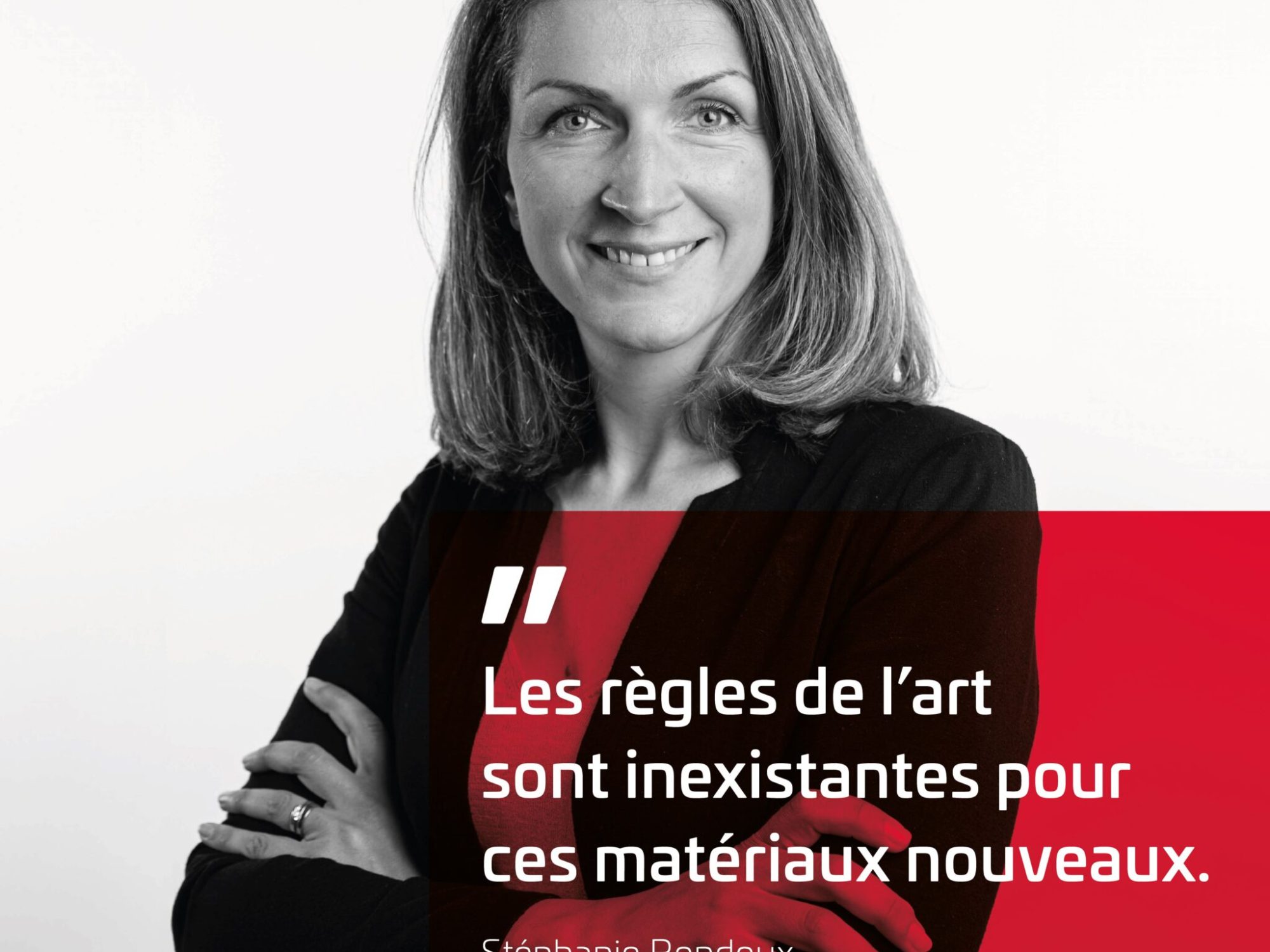“The rules of the art are non-existent for these new materials”.

Interview with Stéphanie Bondoux, Director of Certification and Assessment at Hoffmann Green.
So-called breakthrough technologies such as Hoffmann cements must undergo a rigorous assessment before they can be insured and marketed. Evaluation of the material and its performance, its durability and resistance to degradation, its environmental and health performance: everything is measured.
Focus on the Spinetta law
In France, the Spinetta law of January 7, 1978 provides a framework for liability and requires insurance throughout the construction chain. For both the owner (dommage-ouvrage insurance) and the builder (decennial insurance), insurance is an essential link in the marketing of a construction product. The second aspect of the Spinetta law is the requirement for technical inspection by an independent third party in the event of damage that could affect the solidity and durability of the structure or the safety of people. This normative context generates strong standards, often perceived as major obstacles to innovation.
Certification or assessment?
If a product falls within an existing standard, it must be certified in order to be listed as a “current” technique by insurance companies (see box opposite). For Hoffmann, only one product – H-IONA, Europe’s first decarbonated cement – falls into the category of oversulfated cements. Since it complies with an existing standard – NF EN 206/ CN – it has been able to obtain CE marking in 2021. For its other products, the Vendée-based manufacturer has created new technologies, doing away entirely with clinker, the traditional basic material used to set concrete. The rules of the art are therefore non-existent for these new materials. They have to pass through the evaluation stage to be insurable and marketable.
What does material evaluation involve?
The first step in evaluation is to qualify the material. Here, we talk about chemistry, composition, etc. What emerges is a veritable identity card for the material. For example, the mechanical performance of the cement (strength, compression, etc.) and its propensity for immediate and long-term deformation are evaluated. Next, the assessment focuses on its durability over time: fifty years for a building, a hundred years for an engineering structure such as a bridge or tunnel. The tests cover degradation caused by freezing, thawing, exposure to chlorides from seawater, polluted soils, etc., as well as resistance to loads depending on use, whether for housing or industrial buildings, and to damage caused by earthquakes or fire. H-UKR is the only breakthrough technology to have proven a level of durability lasting a hundred years!
How does the concrete assessment work?
For these new decarbonated cements, a partnership with the CSTB was necessary from the company’s inception in 2014. Concrete assessments are carried out on the basis of studies, university research, analyses, expert appraisals and numerous tests. The team, made up of technical representatives from Hoffmann, CSTB, researchers and academics, and the inspection office, define the test methods and evaluate the results. An ATEx (experimental technical appraisal), an essential pass to market, is then issued by an independent third party, sanctioning the laboratory tests. The concrete is then recognized by insurance companies and can be used for construction.
Is this normative stage a brake on innovation?
Evaluation is an integral part of the innovation process. “It takes several million euros and several years to bring a breakthrough innovation to market. At this rate, gradual optimization is necessary, and evaluations are carried out on an ongoing basis, financed by initial commercializations and fund-raising. Since the beginning of 2022, for example, Hoffmann has been increasing the number of ATEx tests it has carried out on its H-UKR cement, from an agreement for R+3 buildings to IGH buildings, from interior walls to columns. Currently, spiral staircases are in the process of being validated by the CSTB.
The essential carbon assessment
The subject would not be complete without product environmental and health assessments. The carbon impact of cements over their entire life cycle, from the extraction of raw materials to the recycling of concrete at the end of its life, is also measured with the utmost transparency. H-UKR contains not a single gram of clinker and has a carbon footprint 3.5 times smaller than that of traditional cement. –
This interview is taken from pages 22 and 23 of our ForHum magazine, currently available for free consultation on our website.